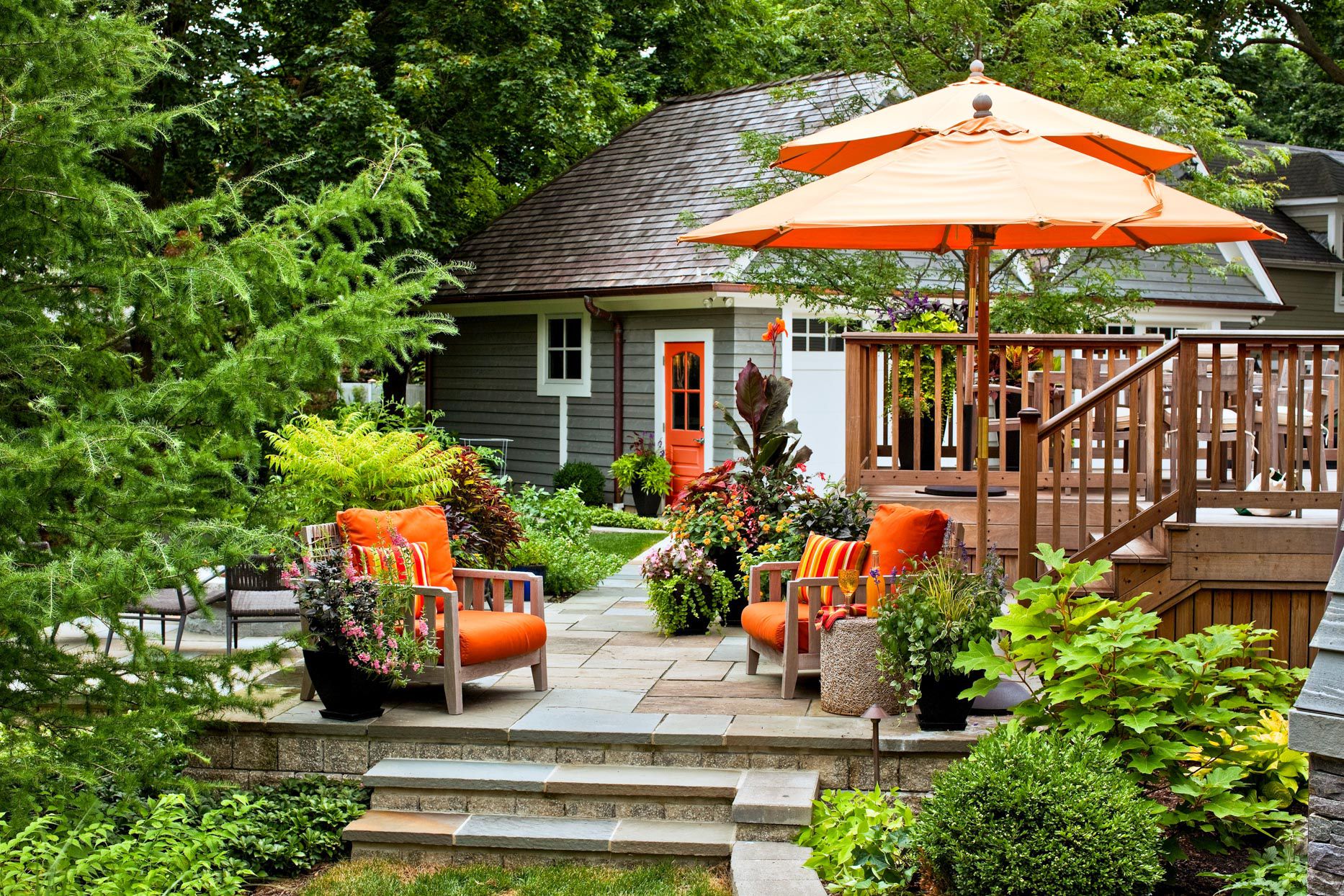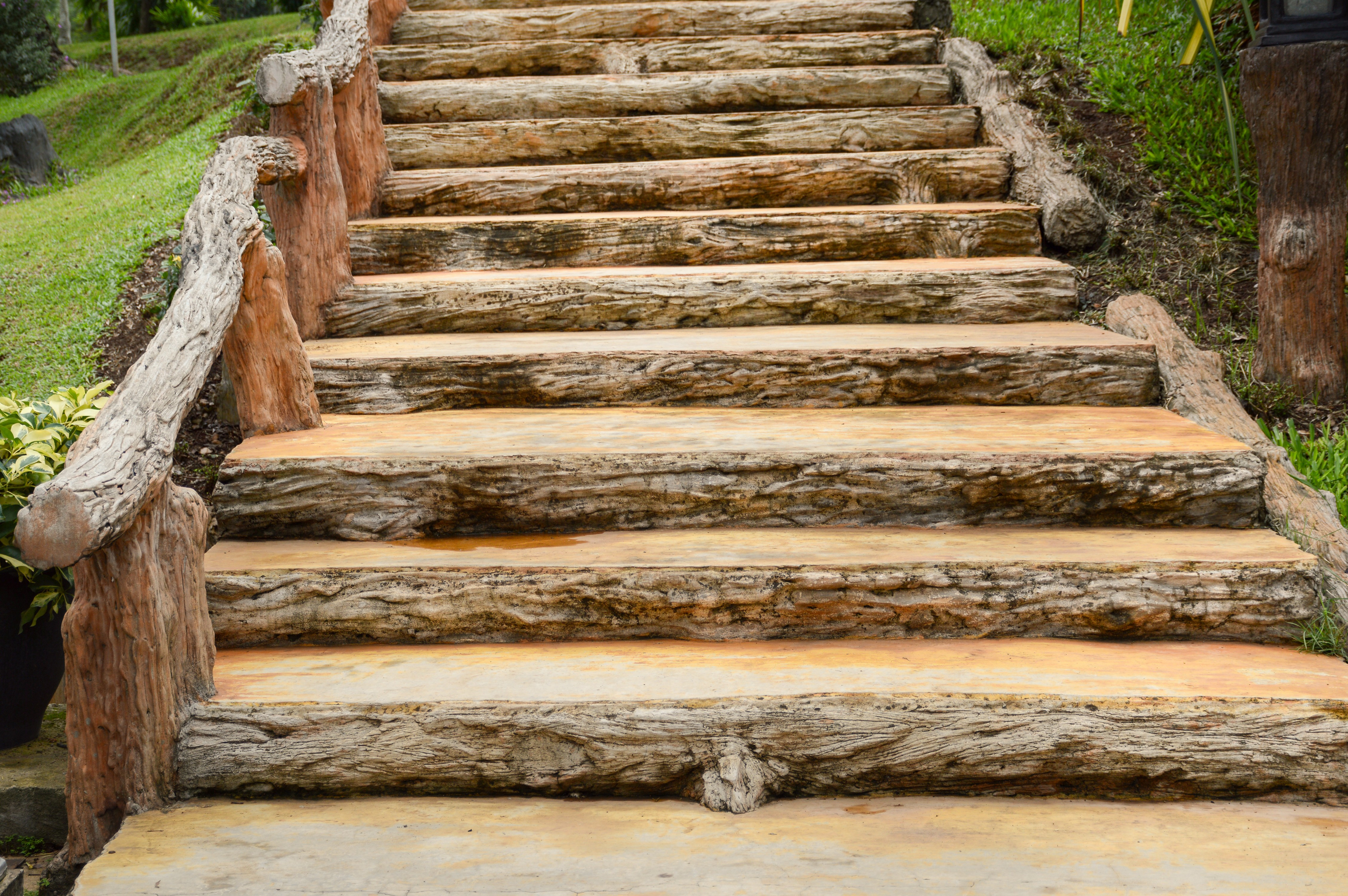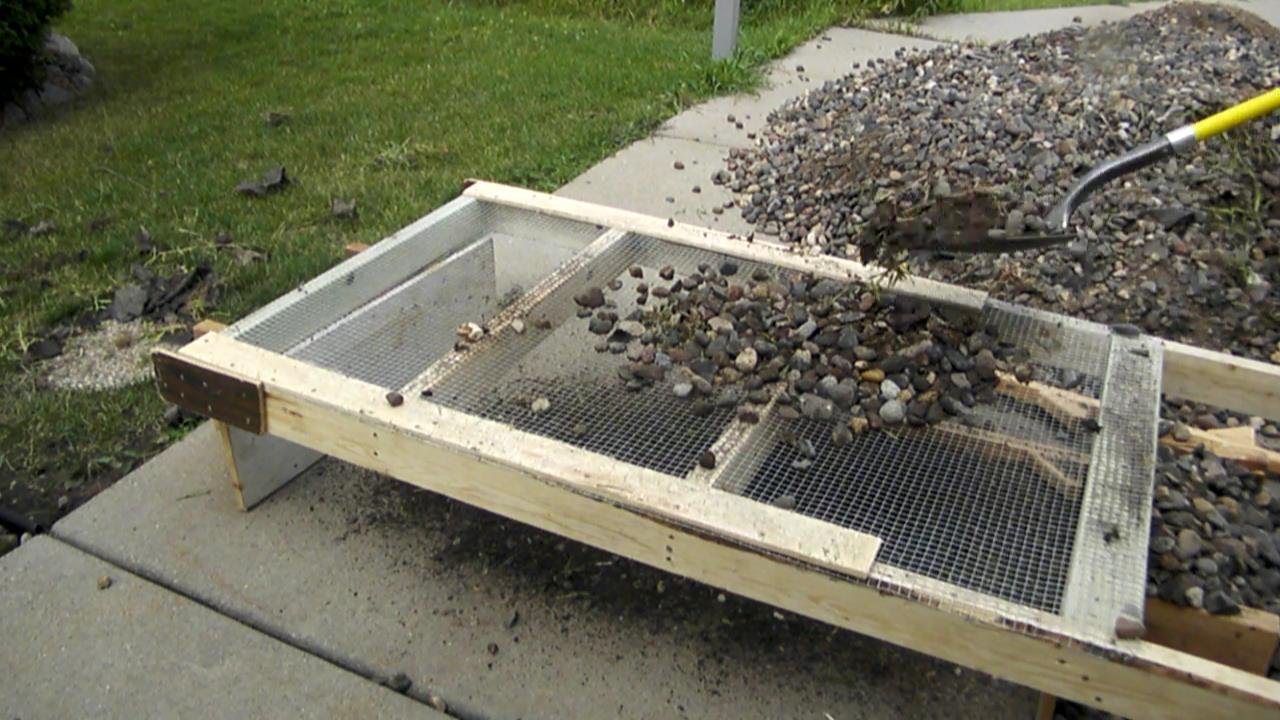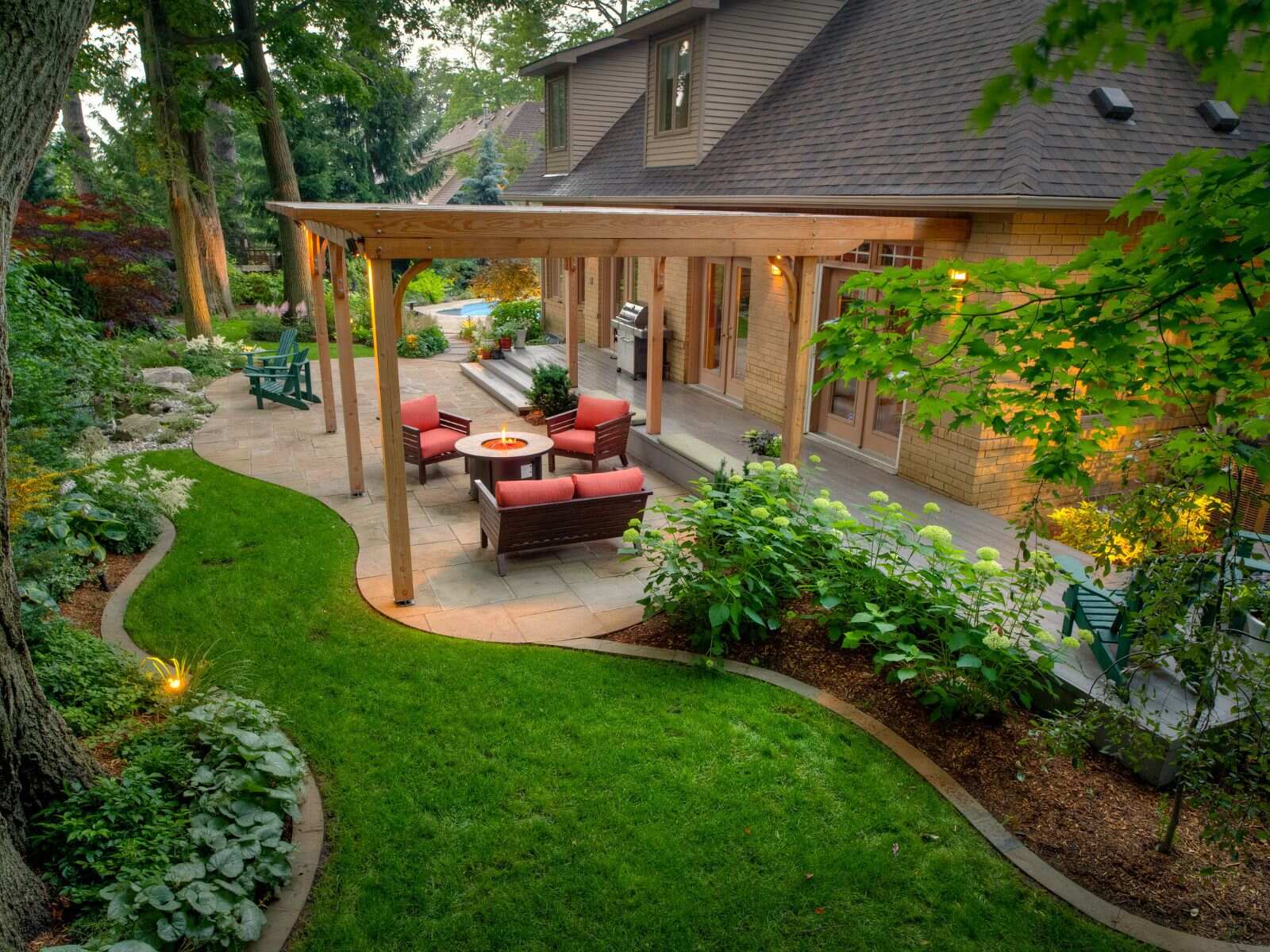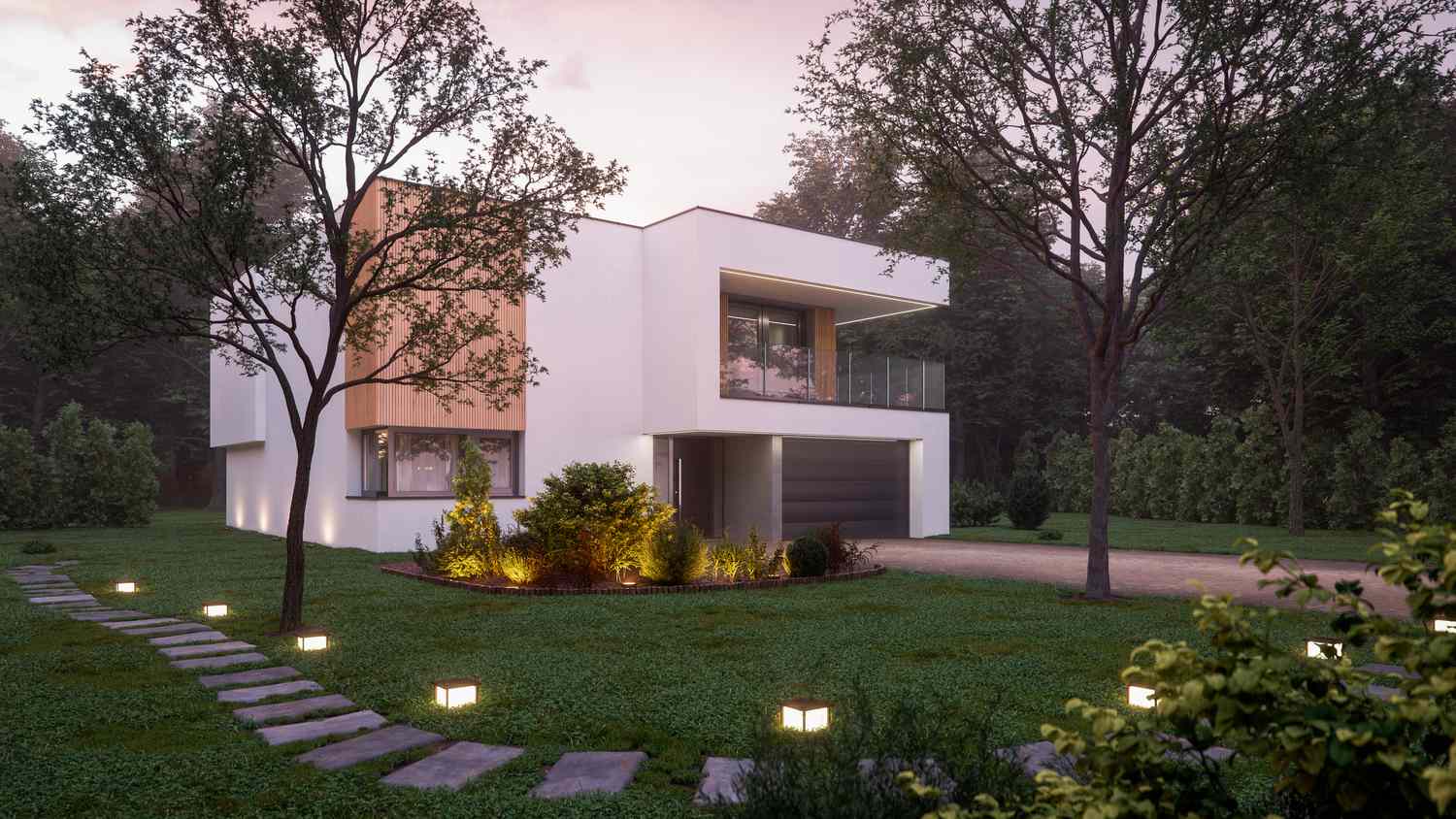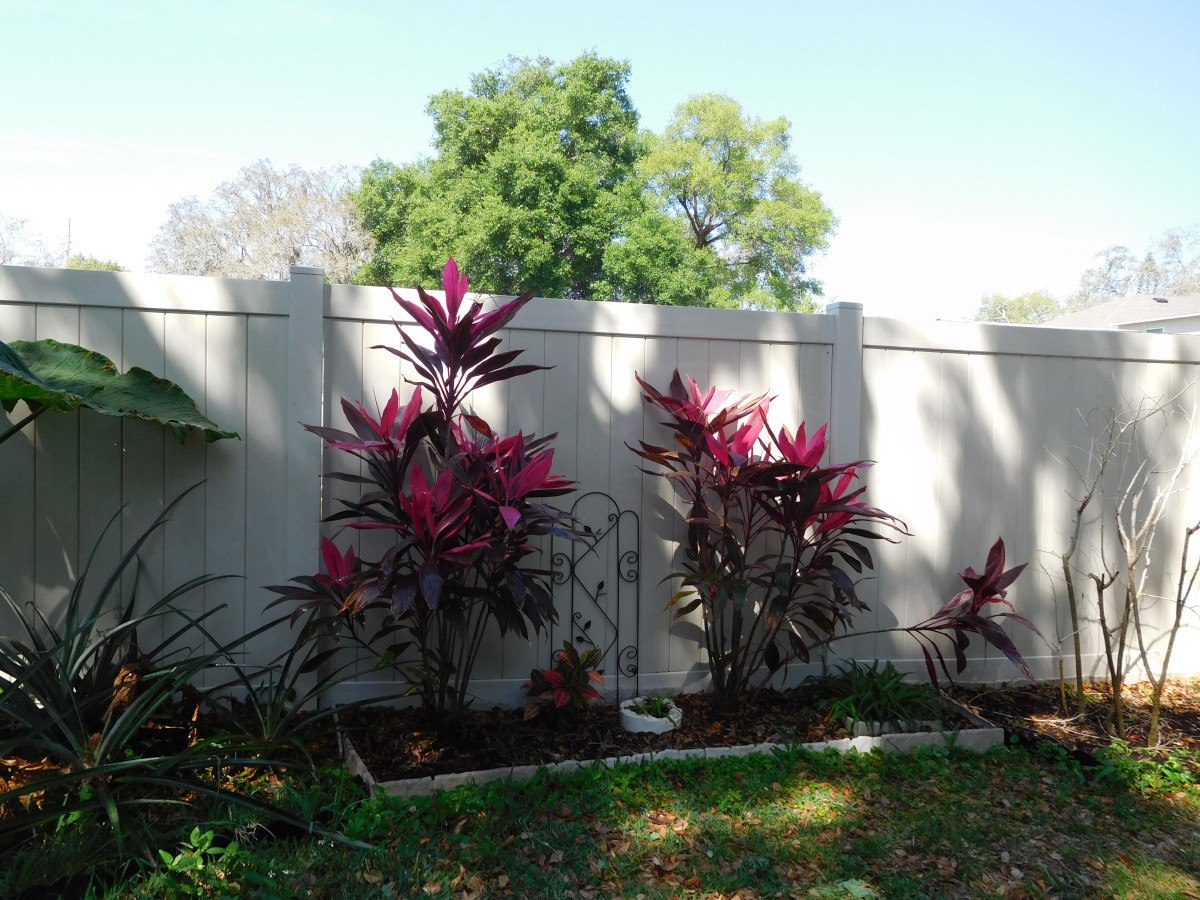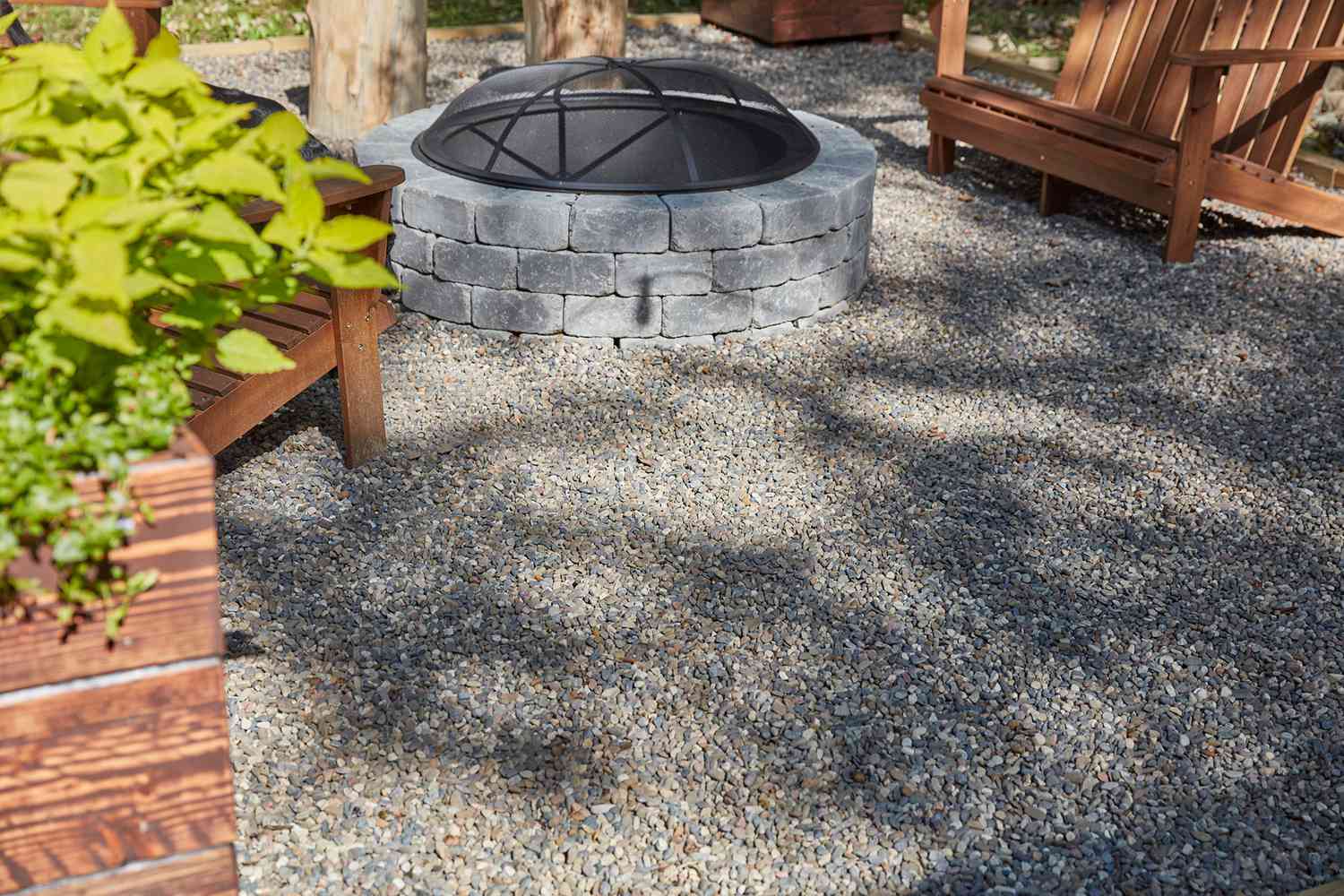Home>Garden Design>Planning Your Garden>How To Redo Landscaping
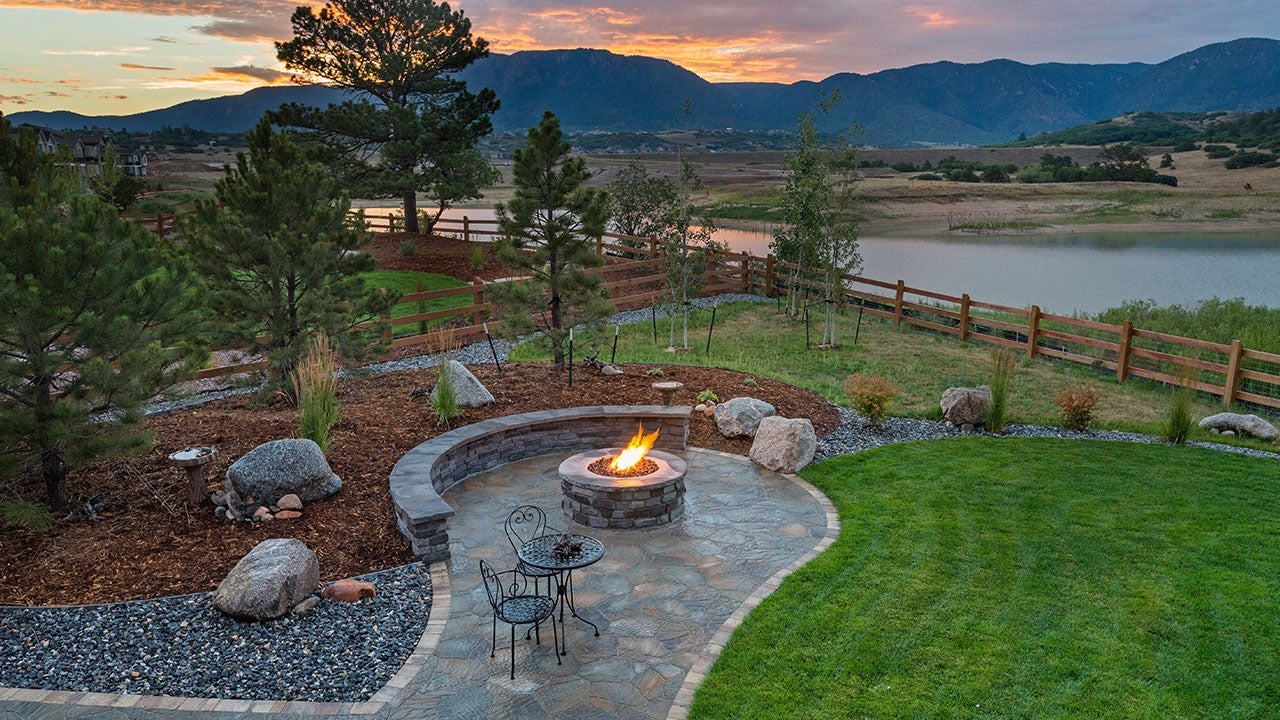

Planning Your Garden
How To Redo Landscaping
Modified: January 22, 2024
Learn expert tips on planning your garden and redoing your landscaping. Get step-by-step guidance to create the garden of your dreams.
(Many of the links in this article redirect to a specific reviewed product. Your purchase of these products through affiliate links helps to generate commission for Chicagolandgardening.com, at no extra cost. Learn more)
Table of Contents
Introduction
Welcome to the wonderful world of landscaping! Whether you’re starting from scratch or looking to give your outdoor space a fresh look, planning your garden can be an exciting and rewarding endeavor. A well-designed landscape not only enhances the beauty of your home but also creates a welcoming and functional outdoor living space for you and your family to enjoy.
When embarking on a landscaping project, it’s essential to approach it with careful consideration and a solid plan. This article will guide you through the step-by-step process of redoing your landscaping, from assessing the current landscape to maintaining the new one. So, let’s get started on transforming your outdoor space into a stunning garden paradise!
Before diving into the details, it’s important to note that every garden is unique, and your landscaping choices should reflect your personal style, preferences, and the overall theme of your home. Whether you have a small urban backyard or a sprawling acreage, thoughtful planning is the key to creating a garden that meets your needs and desires.
The first step in the landscaping process is assessing your current landscape. Take a walk around your property and evaluate its strengths and weaknesses. Consider the existing features, such as trees, shrubs, and hardscapes, and determine which elements you would like to keep or remove. Assess the overall layout of your outdoor space, the quality of the soil, and the amount of sunlight and shade it receives throughout the day. This assessment will provide you with valuable insights and a foundation for your design decisions.
Next, it’s time to design your new landscape. Start by creating a rough sketch or a detailed blueprint of your dream garden. Consider factors such as the desired function of different areas, the flow and circulation patterns, the use of focal points, and the selection of plants and hardscape materials. Take into account the practical aspects, such as access points, maintenance requirements, and the availability of water sources. It’s also a good idea to research and draw inspiration from various sources like gardening magazines, websites, and local gardens.
Once you have a clear vision of your new landscape, it’s time to roll up your sleeves and start bringing it to life. In the following sections, we will discuss each step in detail, from clearing the area and preparing the soil to selecting and planting vegetation, installing hardscape features, and setting up irrigation and drainage systems. We will also cover essential maintenance tasks like mulching, fertilizing, and ongoing care. By following this comprehensive guide, you’ll be well on your way to creating a stunning and functional garden space that you can enjoy for years to come!
Assessing the Current Landscape
Before you begin planning and redesigning your garden, it’s crucial to assess the current state of your landscape. This assessment will help you identify what elements you want to keep, what needs improvement, and what should be removed altogether.
Start by taking a walk around your property and carefully observe the existing features. Look for mature trees, shrubs, and plants that are thriving and contribute to the overall aesthetic. These are elements that you may want to retain in your new landscape design.
On the other hand, identify any plants that are struggling or diseased. Consider whether it’s worth trying to revive them or if it’s better to remove and replace them. Evaluate the condition of any hardscape features, such as pathways, patios, or decks, and determine if they are structurally sound or need repair.
Consider the layout and functionality of your outdoor space. Are there areas that are underutilized or lacking purpose? Are there any obstacles or challenges that restrict movement or interfere with the desired flow of your garden? Take note of these aspects as you assess your landscape.
Assess the quality of your soil. Is it fertile and well-drained, or does it require amendments? Conduct a soil test to determine its pH level and nutrient content. This will help you understand the specific needs of your plants and guide your soil preparation efforts.
Also, take note of the amount of sunlight and shade different areas of your garden receive throughout the day. This information will help you select appropriate plants that thrive in these conditions.
Consider the existing drainage on your property. Are there any areas that tend to accumulate water and become soggy? Addressing these drainage issues is crucial in creating a healthy and functional landscape.
Finally, think about how your current landscape aligns with your overall vision and goals for your garden. Does it reflect your personal style and preferences? Are there any specific themes or design elements you want to incorporate? Understanding your desired aesthetic will guide your decision-making process as you plan the new landscape.
By thoroughly assessing your current landscape, you will gain valuable insights into what elements to preserve, what needs improvement, and what changes are necessary. This evaluation will serve as the foundation for your redesigned garden and help you create a space that is both visually appealing and functional for your needs and preferences.
Designing the New Landscape
Now that you have assessed your current landscape, it’s time to unleash your creativity and start designing the new layout. The design phase is where you can let your imagination run wild and transform your outdoor space into a stunning garden oasis.
Begin by creating a rough sketch or a detailed blueprint of your dream garden. Consider the function of different areas and how you want to use your outdoor space. Do you envision a cozy seating area for entertaining guests? Or perhaps a vegetable garden to grow your own fresh produce? Take into account your specific needs and desires as you plan the layout.
Think about the flow and circulation patterns within your garden. How will people move through the space? Ensure that pathways are wide enough for comfortable passage and consider incorporating focal points like a beautiful fountain or a quaint garden bench.
Research and gather inspiration from various sources, including gardening magazines, websites, and local gardens. Look for ideas and design elements that resonate with you. Pay attention to color schemes, plant combinations, and textures that create visual interest and harmony.
Consider the practical aspects of your design. Take into account access points, such as gates or entryways, and make sure they are well-integrated into the overall layout. Think about the maintenance requirements of your garden and plan accordingly. For example, if you have limited time for upkeep, opt for low-maintenance plants and features.
When selecting plants for your new landscape, consider their specific needs and how they will thrive in your climate and growing conditions. Take into account the amount of sunlight and shade different areas of your garden receive and choose plants accordingly. Keep in mind the desired height, spread, and growth habit of each plant to ensure they fit into your planned layout without overcrowding or overshadowing other plants.
Integrate hardscape features, such as patios, decks, or pathways, into your design. Consider the materials that will best complement your envisioned garden. Whether it’s natural stone, wood, or concrete, choose materials that blend harmoniously with the overall aesthetic.
Lastly, always keep the principles of balance, symmetry, and focal points in mind when designing your landscape. These elements create visual appeal and a sense of harmony. Experiment with different design ideas, and don’t be afraid to refine and revise your plan as you go.
By putting thought and effort into the design phase, you will create a garden that is not only visually pleasing but also tailored to your specific needs and preferences. The design will serve as a roadmap for the implementation of your new landscape, ensuring that your vision comes to life in a cohesive and beautiful manner.
Clearing the Area
Before you can start implementing your new landscape design, it’s important to clear the area of any existing vegetation and debris. This process will provide a clean canvas for your project and allow you to start fresh.
Begin by removing any unwanted plants, including weeds, grass, and shrubs, from the designated areas. You can achieve this by manually pulling them out or using gardening tools like a shovel or a weed trimmer. Ensure that you remove the roots to prevent regrowth.
For larger plants or trees, you may need professional assistance or specialized equipment to safely remove them. Consider hiring an experienced arborist or tree removal service to handle these tasks, as they have the expertise and necessary equipment to remove large plants without causing damage.
Dispose of the cleared vegetation appropriately. You can compost organic material like leaves, grass clippings, and small branches. If you have a large amount of debris, you may need to rent a dumpster or contact your local waste management services for disposal options.
Along with removing vegetation, clear the area of any rocks, stones, or other debris that may hamper your landscaping efforts. This will provide a clean and level surface for the next steps of your project.
Take this opportunity to inspect any existing hardscape features, such as pathways, patios, or walls, and assess their condition. Remove any damaged or deteriorating elements that are beyond repair. This will ensure that your new landscape design begins with a solid foundation.
While clearing the area, consider whether there are any underground utilities like pipes or cables that need to be marked. Contact your local utility companies to locate and mark these utilities before digging or installing any hardscape elements to prevent accidental damage.
Clearing the area sets the stage for the rest of your landscaping project. It allows you to start with a blank canvas and gives you the opportunity to envision and implement your new design without any hindrances or remnants of the old landscape.
Remember to wear appropriate protective gear, such as gloves and safety glasses, when clearing the area to avoid injury. Additionally, follow local regulations and guidelines when disposing of vegetation and debris to ensure proper waste management practices.
Soil Preparation
A vital step in the process of redoing your garden is preparing the soil. Healthy soil provides a nourishing foundation for your plants to thrive and ensures their long-term success. Proper soil preparation involves improving its structure, fertility, and drainage.
Start by testing your soil to determine its pH level and nutrient content. You can purchase a home soil testing kit or send a sample to a local agricultural extension office for a more comprehensive analysis. This information will guide you in making the necessary amendments to create an optimal growing environment.
If your soil is too acidic or alkaline, you may need to adjust the pH level. Adding lime to acidic soil raises the pH, while sulfur or acidic fertilizers can lower the pH of alkaline soil. Follow the recommended quantities based on your soil test results.
Improving the structure of the soil is essential for root development and water movement. If your soil is heavy and compacted, incorporate organic matter like compost, well-rotted manure, or peat moss to improve its texture and drainage. This will enhance its ability to hold nutrients and allow air to reach the roots.
When applying organic matter, aim for a minimum depth of 4-6 inches. Work it into the existing soil using a tiller or garden fork. Avoid excessive tilling, as it can disrupt the soil structure and harm beneficial organisms.
Enriching the soil with nutrients is crucial for healthy plant growth. Organic fertilizers, such as compost or well-balanced organic fertilizers, can provide a slow and steady release of nutrients. Follow the recommended application rates for your specific type of plants and soil conditions.
Consider adding beneficial soil amendments like bone meal, blood meal, or rock phosphate to provide essential nutrients like phosphorus and trace minerals. These amendments can be incorporated into the soil during the preparation phase.
Proper soil drainage is essential for preventing waterlogged conditions that can lead to root rot and other plant diseases. If your soil is poorly drained, consider adding amendments like perlite, vermiculite, or sand to improve drainage. Raised beds or mounded planting areas can also help improve drainage in areas with persistent water accumulation.
During the soil preparation process, remove any rocks, weeds, or debris that may have surfaced. Rake the soil to create a smooth and level surface for planting.
Remember that soil preparation is an ongoing process. As you continue to care for your garden, monitor the soil quality and make necessary amendments based on the needs of your plants. Regularly add organic matter, periodically retest the soil, and adjust your fertilization regimen as needed.
By adequately preparing the soil, you are setting the stage for healthy plant growth and a thriving garden. Taking the time to improve its structure, fertility, and drainage will be well worth the effort, as it will ensure the long-term success of your plants and the overall beauty of your garden.
Selecting and Planting Vegetation
One of the most exciting aspects of redoing your garden is selecting and planting new vegetation. This step allows you to bring your design to life and create a stunning landscape filled with a variety of plants that suit your taste and garden conditions.
When selecting plants, consider the climate, soil type, and amount of sunlight and shade in your garden. Choose plants that are well-suited to these conditions to ensure their successful growth. Consider the mature size and growth habit of each plant to ensure they fit into your planned layout without overcrowding or overshadowing other plants.
Begin by making a list of plants you love, taking inspiration from gardening books, magazines, and local nurseries. Research each plant’s specific requirements, including the ideal soil pH, moisture levels, and sun exposure. This will help you determine whether they are suitable for your garden.
Consider the overall aesthetic you want to achieve in your garden. Are you going for a formal or informal look? Do you prefer a specific color palette or a mix of vibrant hues? Choose plants that will complement each other and create a cohesive and visually appealing landscape.
While flowers are often the highlight in many gardens, don’t forget to incorporate a mix of foliage and textures. Evergreen shrubs, ornamental grasses, and variegated plants can add visual interest and provide year-round color and structure.
When planting, prepare the soil by digging a hole that is slightly wider and deeper than the root ball of the plant. Gently loosen the roots and place the plant in the hole, making sure it sits at the same level as it did in its original container. Backfill the hole with soil, firming it gently around the roots.
Water the newly planted vegetation thoroughly to settle the soil and help establish good root-to-soil contact. Create a shallow basin around the plant to retain water during the initial establishment period. Use mulch to insulate the soil and reduce weed growth.
Follow specific care guidelines for each plant regarding watering, fertilizing, and pruning. Regularly monitor the health of your plants and address any signs of stress, disease, or insect infestation promptly.
Consider grouping plants based on their water and sunlight requirements to simplify maintenance tasks. This technique, known as companion planting, allows you to efficiently water and care for plants with similar needs.
Don’t forget to include some native plants in your garden. Native plants are well-adapted to the local climate and often require less maintenance and water. They also provide habitat for local wildlife, supporting biodiversity in your garden.
Remember that gardening is an ongoing process, and it may take time for your new vegetation to mature and fill in the space. Be patient and enjoy the process as your garden transforms into a beautiful and vibrant landscape.
By selecting suitable plants and taking care during the planting process, you will create a garden that is not only visually stunning but also sustainable and well-suited to your specific garden conditions.
Installing Hardscape Features
Adding hardscape features to your garden can greatly enhance its functionality and aesthetic appeal. These non-plant elements provide structure, define outdoor spaces, and create focal points that complement your overall landscape design. From patios and pathways to fences and water features, hardscape features add character and depth to your garden.
Start by considering the specific hardscape elements that will best suit your needs and design vision. For example, if you love to entertain guests, a patio area with seating and dining options can create a welcoming space for social gatherings. If privacy is a concern, installing a fence or a hedge can provide a sense of seclusion.
When selecting materials for your hardscape features, consider both functionality and aesthetics. For pathways and patio areas, popular options include natural stone, brick, concrete pavers, or gravel. Each material has its own unique characteristics in terms of color, texture, and durability.
Ensure that the materials you choose complement the overall style of your garden. A modern garden may benefit from clean lines and minimalistic elements, while a more rustic or cottage-style garden could incorporate natural stone or weathered wood.
Once you have decided on the hardscape elements and materials, it’s time to start the installation process. Begin by marking the layout of the feature using stakes and string or a garden hose. This will help you visualize the final result and make any necessary adjustments.
Excavate the area where the hardscape feature will be installed. The depth of excavation will depend on the specific element; for example, a pathway may require a depth of 4-6 inches, while a retaining wall may need a deeper excavation to provide stability.
Install a suitable base material, such as compacted gravel or sand, to provide a stable foundation for the hardscape element. Ensure that the base is level and properly compacted to prevent future shifting or sinking.
Carefully lay and secure the hardscape materials according to the manufacturer’s instructions. For pathways and patios, consider using a pattern or design that complements the overall aesthetic of your garden.
If you are installing fences or walls, ensure that they are structurally sound and built to code. Always check with local authorities or homeowners’ associations to understand any regulations or restrictions that may apply.
Remember to incorporate proper drainage into your hardscape design. This can be achieved by sloping pathways away from your house, creating drainage channels, or using permeable materials that allow water to filter through.
Finally, complete the installation by adding finishing touches, such as joint sand for pavers or a sealant for certain materials. This will help protect the hardscape elements and prolong their lifespan.
Throughout the installation process, take care to ensure the safety of yourself and others. Use proper safety equipment, such as gloves, goggles, and knee pads, when handling heavy materials or working with tools.
Installing hardscape features requires careful planning, attention to detail, and patience. By incorporating these elements, you can create a functional and visually appealing garden space that adds depth and character to your landscape.
Irrigation and Drainage Systems
Proper irrigation and drainage systems are crucial for maintaining a healthy and thriving garden. These systems help ensure that your plants receive the right amount of water while preventing waterlogging or runoff that can lead to plant stress or damage. Implementing effective irrigation and drainage systems is essential to the long-term success of your landscape.
Start by assessing the water requirements of your plants. Different plants have varying needs, so it’s important to select an irrigation system that can deliver water efficiently and effectively. Consider factors such as the type of plants, soil conditions, and climate in your area.
There are several types of irrigation systems to choose from, including sprinklers, drip irrigation, and soaker hoses. Each system has its own advantages and considerations.
Sprinkler systems distribute water through sprinkler heads, covering a wide area. They are suitable for lawns and larger garden spaces. However, they can be less efficient in terms of water usage and may lead to water waste if not properly managed.
Drip irrigation systems are an efficient option, delivering water directly to the plant’s root zone. They use tubing with emitters to slowly release water, reducing evaporation and ensuring minimal water loss. This system is ideal for individual plants, containers, or areas with specific watering needs.
Soaker hoses are another option for targeted watering. These hoses release water directly into the soil, allowing it to seep slowly to the plant roots. Soaker hoses are versatile and can be easily maneuvered around plants and garden beds.
Once you have selected the appropriate irrigation system, it’s important to design and install it correctly. Consider the location and layout of your plants, as well as any existing hardscape features, when planning the irrigation system. Ensure that the water distribution is even and covers the entire root zone of each plant.
Additionally, incorporate a timer or automated controller to regulate the watering schedule. This will help ensure consistent and efficient water distribution without overwatering or under-watering your plants.
In addition to irrigation, proper drainage systems are essential for maintaining a healthy garden environment. Poor drainage can lead to waterlogging, root rot, and other damaging effects. Evaluate the natural drainage patterns of your garden and make any necessary adjustments.
Consider grading the soil to create a slope that directs excess water away from your plants and structures. Installing drainage channels or French drains can help redirect water away from low-lying areas or problematic spots.
Ensure that gutters and downspouts are clean and functioning properly, directing water away from the foundation of your house and into appropriate drainage areas.
Monitor your irrigation and drainage systems regularly to ensure they are functioning correctly. Inspect for leaks, clogs, or other issues that may affect their efficiency. Adjust the watering schedule as needed to accommodate seasonal changes and plant requirements.
Implementing an effective irrigation and drainage system will provide your plants with the necessary hydration while preventing water-related issues. By properly designing, installing, and maintaining these systems, you will ensure the health and longevity of your garden.
Mulching and Fertilizing
Mulching and fertilizing are essential practices for maintaining a healthy and vibrant garden. These tasks help improve soil fertility, retain moisture, suppress weed growth, and promote the overall health and growth of your plants.
Mulching plays a crucial role in garden maintenance. It involves applying a layer of organic or inorganic material to the soil surface around your plants. Organic mulches, such as wood chips, straw, or compost, provide numerous benefits. They gradually break down, enriching the soil with nutrients and improving its structure. Inorganic mulches, such as gravel or landscape fabric, can also help suppress weeds and conserve moisture.
When applying mulch, ensure that the layer is thick enough to provide adequate coverage but not too thick to suffocate the plants. Aim for a thickness of around 2-3 inches, extending the mulch all the way to the drip line of the plants. Leave space around the stem or trunk of the plants to prevent rot or disease.
Mulching offers several advantages. It helps retain moisture in the soil, reducing the need for frequent irrigation. Mulch also acts as insulation, protecting the roots of plants from extreme temperature fluctuations. Additionally, it helps suppress weed growth by blocking sunlight and reducing competition for water and nutrients.
Fertilizing is another important aspect of garden maintenance. While soil amendments like compost and organic matter provide a steady supply of nutrients, additional fertilization may be necessary to meet the specific needs of your plants.
There are various types of fertilizers available, including organic and synthetic options. Organic fertilizers, such as compost or well-rotted manure, provide slow-release nutrients and improve soil health over time. Synthetic fertilizers contain concentrated nutrients that provide a quick boost to plant growth. When selecting a fertilizer, consider the nutrient ratios and the specific requirements of your plants.
Apply fertilizers according to the instructions on the package, taking care not to exceed the recommended amounts. It’s essential to strike a balance and avoid over-fertilizing, as this can lead to nutrient imbalances, burn the plants, or harm the environment.
Timing is crucial when fertilizing. Generally, it’s best to fertilize in early spring and late summer when plants are actively growing. Follow up with additional applications as needed throughout the growing season.
When applying fertilizers, water the area thoroughly to ensure the nutrients reach the root zone. This will help prevent the fertilizer from sitting on the soil surface and potentially causing burn or leaching.
Regularly monitor your plants for signs of nutrient deficiencies or excesses. Yellowing leaves, stunted growth, or poor flowering may indicate a nutrient imbalance. Adjust your fertilization regimen accordingly.
Remember that moderation is key when it comes to mulching and fertilizing. Too much of either can cause problems for your plants. Regularly inspect the mulch layer to ensure it is not too compacted or harboring pests or diseases. Monitor the health and growth of your plants and adjust your fertilization and mulching practices as needed.
Mulching and fertilizing are essential practices for maintaining the health and vitality of your garden. By providing a protective layer of mulch and the necessary nutrients through fertilizing, you will create an environment that nurtures your plants and promotes optimal growth and beauty.
Maintaining the New Landscape
Maintaining your newly redesigned landscape is crucial to ensuring its long-term health and beauty. Regular care and attention will help your plants thrive and prevent issues such as weed infestation, disease, and nutrient deficiencies. By following a few key maintenance practices, you can enjoy a vibrant and flourishing garden for years to come.
One of the most important maintenance tasks is regular watering. Monitor the moisture levels in your garden and adjust your watering schedule as needed. Deep and infrequent watering is generally better than shallow and frequent watering, as it encourages deep root growth. Consider the specific water requirements of each plant and ensure they receive adequate hydration.
Regular weeding is essential to prevent weed competition and ensure the health of your plants. Remove weeds by hand or use appropriate tools such as a hoe or garden fork to uproot them. Consider applying mulch or using landscape fabric to suppress weed growth and minimize maintenance efforts.
Deadheading, or removing spent flowers, encourages additional blooms and helps maintain the aesthetic appeal of your garden. Prune plants as needed to maintain their shape, remove dead or damaged branches, and encourage healthy growth. Pay attention to specific pruning requirements for different plant species to avoid damaging them.
Regularly monitor your plants for signs of pests or diseases and take prompt action if needed. Identify and treat any potential issues early to prevent the spread of pests or the development of plant diseases. Consider using organic pest control methods or consult with a local garden center for advice on specific issues.
Mulch plays an important role in maintaining your garden. Regularly check the mulch layer and replenish it as necessary to maintain its thickness and effectiveness. This will help retain moisture, suppress weed growth, and provide insulation for the roots of your plants.
Stay on top of fertilizing requirements for your plants. Regularly apply fertilizers, following the recommended amounts and timing. Monitor the health and growth of your plants and adjust your fertilization practices accordingly.
Keep an eye on the overall health and vigor of your plants. Pruning and shaping them, as well as removing any dead or diseased material, will help maintain their appearance. Regularly inspect the foliage for any signs of stress, nutrient deficiencies, or pest damage.
Maintaining your landscape also includes monitoring and addressing any issues with your hardscape features. Check for any damage or wear and repair or replace as needed. Clean pathways and patios regularly to prevent surface buildup and maintain their appearance.
Lastly, consistently observe and enjoy your garden. Pay attention to how the plants are adapting to their environment and make note of any changes or improvements you would like to make. Continue researching and learning about garden care to enhance your knowledge and expertise.
Maintaining your new landscape requires diligence, care, and regular attention. By implementing these maintenance practices, you will create an environment that promotes the health and growth of your plants while keeping your garden beautiful and thriving.
Conclusion
Redoing your garden can be a rewarding and fulfilling experience. It’s an opportunity to create an outdoor space that reflects your personal style, enhances the beauty of your home, and provides a sanctuary for relaxation and enjoyment. By following the steps outlined in this guide, you can transform your landscape into a stunning and functional garden that brings you joy for years to come.
Remember to start by assessing the current state of your landscape, identifying what elements to keep and what areas need improvement. Use this assessment as a foundation for designing your new landscape, considering the function, flow, and aesthetic appeal of different areas. Clear the area of unwanted vegetation and debris, and prepare the soil to create an optimal growing environment for your plants.
Select the right vegetation based on your climate, garden conditions, and design preferences. Take care when planting, ensuring proper spacing and watering to encourage healthy growth. Incorporate hardscape features that enhance the functionality and beauty of your garden, and design an efficient irrigation and drainage system to support your plants’ needs.
Mulching and fertilizing are critical maintenance practices that promote soil health and provide essential nutrients to your plants. Regularly monitor and maintain your garden, including watering, weeding, pruning, and addressing any pest or disease issues. Keep an eye on the health and vitality of your hardscape features, and stay diligent in their upkeep.
Through consistent care and attention, your new landscape will flourish and evolve over time. Embrace the process and enjoy watching your garden grow and thrive. Gardening is a journey, and with each season, you will deepen your knowledge and appreciation for the beauty and wonder of the natural world.
So, roll up your sleeves, grab your gardening tools, and get ready to embark on an exciting adventure in transforming your outdoor space. By combining your creativity, planning skills, and a little bit of patience, you will create a garden that brings you pleasure, relaxation, and a connection to nature. Get ready to enjoy your newly redesigned landscape and create beautiful memories in your personal outdoor haven.


